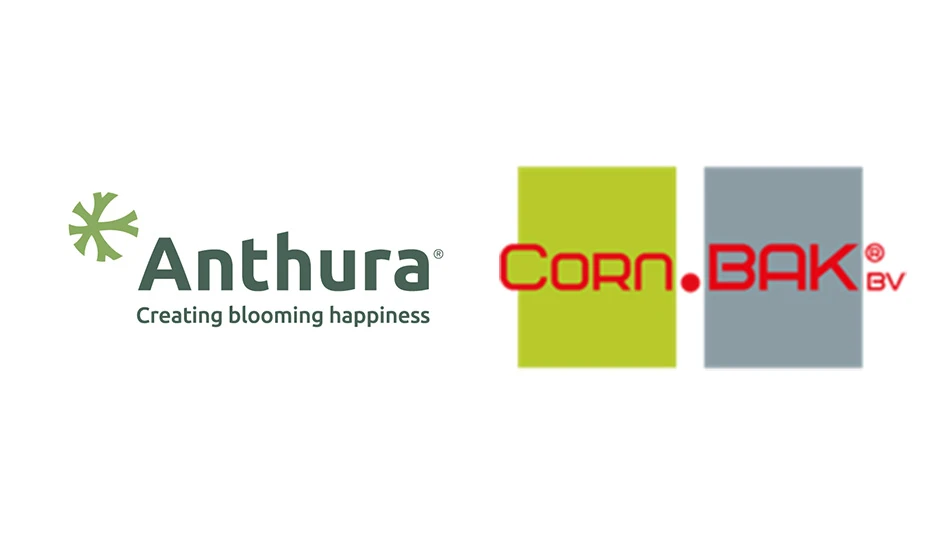
 Independent garden centers in California are doing everything they can to show customers that brown does not have to be the new green when it comes to their gardens and landscapes, despite the drought that is scorching the earth across the entire state.
Independent garden centers in California are doing everything they can to show customers that brown does not have to be the new green when it comes to their gardens and landscapes, despite the drought that is scorching the earth across the entire state.
California has been in a state of emergency for more than a year and a half due to one of the worst droughts the western half of the United States has seen since the late 1100s, according to the California Department of Water Resources. The figures describing and maps illustrating just how parched the area is are numerous and staggering.
Garden retailers in the state know they can’t wait for things to improve. They are instead adapting to the dry climate, because no one can predict how long it will last.
“No end in sight”
Though the golden state’s arid conditions have been making headlines recently, the drought is not new. At this time two years ago, the entire state was in a drought. It’s the severity that has changed.
“We’re in a four-year drought with no end in sight, which is pretty unsettling for everyone who’s concerned about where the water is going to come from or if it’s going to show up in the next rainy season,” says Doug Carlson, information officer for the California Department of Water Resources. “The snowpack, which we rely upon for 30 to 40 percent of California’s water in a normal year, has never been lower.”
Gov. Jerry Brown demonstrated this on April 1, 2015, in an area of the Sierra Nevada Mountains, where he stood on bare ground that normally is covered in about five-and-a-half-feet of snow at that time of year. That’s when the request that Californians reduce water consumption transformed to a 25 percent mandatory reduction of potable urban water usage compared to 2013 use through Feb. 28, 2016. Brown can renew that restriction if the drought continues.
The U.S. Drought Monitor produces weekly maps of drought conditions in the country. In the current picture of the U.S., some states have blotches of beige and yellow, indicating patches of drought. However, California is completely blanketed in shades of deep maroon, red and orange, like a fresh burn. Those crimson colors indicate the intensity of drought, which is ranked from D0, abnormally dry, to D4, exceptional drought. Two years ago, most of the state was in a moderate to severe drought. Now, 71 percent is suffering extreme and exceptional drought.
“There was a major drought that they can analyze and describe pretty much in detail back in the 1100s. It was a decade-long drought,” Carlson says. “But this is the longest — at 15 years — period of sustained dryness in the West since 1160 or so.”

But according to a February 2014 article in National Geographic, scientists “agree that the past century has been unusually moist — and warn that California is now vulnerable to a drought that is measured not in years, but decades. Perhaps even centuries.” Some research shows century-long droughts between 900 and 1400 A.D., according to the article. The New York Times wrote a similar article back in 1994. This may be the new normal.
This year, reservoirs that would have normally received some relief from the melting snow pack were already low. When the snow didn’t fall, it exacerbated conditions.
“The largest reservoir in the state is at 64 percent of its normal storage as of now [May 21] — that’s Lake Shasta,” Carlson says. “Lake Orville is at 55 percent. Trinity Lake, another large one, is 51 percent of its historical average.”
Some people have compared this drought to another memorable dry period in the late 1970s.
“There is more water in the reservoirs at this time of year than there was that year. So on the one hand you could say, ‘Oh, OK, well it’s not as bad,’” Carlson says. “But on the other you’ve got 72 or 73 percent more people here than we did in ’77. We had 22 million then; we have 39 million now.”
That’s partially what makes this drought more significant than any others — the number of people living in the state, says Max Gomberg, senior environmental scientist with the California State Water Resources Control Board, the agency with legislative power to impose water restrictions (granted in emergency situations) to make sure the state reaches the 25 percent reduction goal.
“This is different from anything we’ve experienced. Not because it’s necessarily the worst drought in history … By some measures [California] is the 7th largest economy in the world, and it is the breadbasket for the entire country, plus a major exporter of food for certain agricultural products,” Gomberg says. “There’s never been a time with that level of population and economic activity that we faced a drought on these proportions. This is the wrong phrase, but it’s the perfect storm of conditions.”

Not such a new normal
Though the farming and agriculture industries account for 80 percent of the water usage in California, residents, garden centers and other businesses are required to do their part. Depending on per capita usage, they are being asked to reduce their consumption by 8 to 36 percent. That distinction is important, says Dave Stoner, president and CEO of Sloat Garden Centers, which has nine locations in San Francisco and surrounding areas.
“Half of our stores are in a county that has its own reservoirs, and they are full. So even though we are cutting back, we have plenty of water in one of the counties of the three that we’re in, [Marin County] we are still cutting back because it’s a state mandate,” he says. “But it’s a little different psyche.”
That’s not the only reason Stoner isn’t in panic mode. Conserving water “has been a way of life” for Californians not for just the past four years, but for four decades.
“Our plant palette hasn’t dramatically changed with this drought. It’s become more prominent … we’re putting the drought-tolerant material out front more, and we’re trying to teach our customer how to garden effectively,” he says. “That’s always been a part of our message because of where we are.”
 Even so, Stoner has seen an uptick in boxwoods, rockrose and cistus, and phormiums have always been strong sellers.
Even so, Stoner has seen an uptick in boxwoods, rockrose and cistus, and phormiums have always been strong sellers.
Repetition is key when educating consumers about how to create water-wise gardens, and Sloat has a number of resources for its customers. There is a water savings tip in each “Gardeners’ Notebook” eblast, sent three to four times a month. Two out of three 2015 issues of the print version of that publication featured cover stories on low-maintenance plants, he says.
“We feel the plants are almost the second choice. In other words, if we can teach our customers to water efficiently, they can grow more plants or they can keep their established landscapes much healthier,” he says. “If they mulch, if they use some of the polymers when they’re planting. Those kinds of things make a huge difference down the road, and allow a much broader palette to be planted and maintained.”
From the ground up
The Sloat website reflects this philosophy; there are several fact sheets available to customers about how to irrigate properly, with tools like ollas and products like polymers to help their watering go further.
“I repeat it ad nauseum, because most people either under or over irrigate in frequency or volume,” he says. “That’s why before the plants go in, it’s about planning for making it a healthy, drought-tolerant plant. It’s all about the soil and the water.”
That’s also a mantra for Green Acres Nursery & Supply, with four locations in and within surrounding areas of Sacramento. The company prints water-wise tips on staff T-shirts.
“We have found that displaying simple water-wise practices on our uniforms is a great way to start the conversation with customers,” says Ashley Gill Rossi, who co-owns the business with her family.
 There are four different messages on T-shirts. The front of one reads “Water Smarter,” with “Drip System + Irrigation Clock = Water Savings” scrolled on the back. The “Do you Mulch? A layer of mulch reduces evaporation from the soil by 70 percent” T-shirt seems to be a customer favorite, Gill Rossi says.
There are four different messages on T-shirts. The front of one reads “Water Smarter,” with “Drip System + Irrigation Clock = Water Savings” scrolled on the back. The “Do you Mulch? A layer of mulch reduces evaporation from the soil by 70 percent” T-shirt seems to be a customer favorite, Gill Rossi says.
“At Green Acres, our four pillars of water conservation in the garden are based on: updating your irrigation systems to incorporate the latest water-saving technology such as drip irrigation, smart clocks, water-saving sprinkler nozzles, etc.; planting climate appropriate, water-wise plants in the right places so they don’t require additional water; mulching to help the soil retain water and keep roots cool; and using organics to build soil chemistry and not push water thirsty growth,” she says.
Education also means “walking the walk,” says Monte Enright, president and COO of Armstrong Garden Centers in California and Pike Nurseries in Georgia and North Carolina.
“We have adjusted the times when we water within our stores so that all watering is done before 10 a.m. and where/when applicable, a second watering after 4 p.m.,” Enright says. “This not only helps avoid excessive evaporation during the day, but also helps with safety so we avoid slip and falls in our stores. When watering, we use hoses with trigger sprayers (the same ones we sell) so we can quickly turn on/off the flow of water to ensure we aren’t watering walkways. We’re also very diligent about making sure faucets and hoses are in good condition with no leaks. Our fence bowl container gardens are on drip irrigation for maximum watering efficiency.”
Despite the extra education and marketing efforts, garden centers are still seeing declines in business. Scott Klittich, chairman of the board of the California Association of Nurseries and Garden Centers, says after the governor made the announcement April 1, businesses were hit. Many owners he spoke to were down by 20 to 25 percent.
“The general public’s perception is to just not do anything,” Klittich says.
 With this recent water reduction mandate, Stoner says sales have declined, but he is adapting his inventory and had planned for that.
With this recent water reduction mandate, Stoner says sales have declined, but he is adapting his inventory and had planned for that.
“Ultimately as the drought continues through the summer, we won’t have the need to carry more plants because business will definitely suffer. We are anticipating that, and we’ll be very careful as to what we carry,” Stoner says. “We’ll also be careful where we store plants. Where we may have displayed more green goods in the sun, we’ll be tucking things under shade so they require less water and putting things like pottery in the sun. We’ll be looking at how we display our nursery. It will be a challenge.”
Opportunities amid the crisis
On the flip side, many professional landscapers are seeing increases in business as people begin to convert their thirsty lawns to meet the reduction goals and take advantage of rebate rewards offered by the state.
“Everyone is talking about their yards, everywhere you go. Constantly having this drought on the front page of the newspaper is bringing focus to landscapes and gardens,” Klittich says. “That’s a good thing that they are looking at their gardens and seeing how they can improve upon them.”
On May 26, the Metropolitan Water District of Southern California voted to increase funding for its turf-removal program by $350 million for one year, but will also change certain terms and conditions of the extremely popular program. The residential rebate program’s original $100-million budget was depleted quickly due to a surge in demand after the governor’s restrictions went into effect.
In a blurb found in a 1995 issue of Garden Center magazine, Sloat Garden Center was “taking advantage of California’s drought” back then, too.
“The most advertising we get is during drought,” said former owner George Szakall. “Water districts distribute brochures and information on replacing lawns with drought-tolerant groundcovers.”
Enright says Armstrong Garden Centers, which has more than 30 stores in the state, is working to remove portions of grassy areas in their landscapes.
“This is the same message we are telling our customers. We can still have areas of grass for the aesthetics and for homeowners’ recreational use. However, removing a portion of the lawn quickly gets you to the water reductions being required,” Enright says. “We started with our store in Pasadena and turned the existing landscape in front of the store into a water-wise learning garden. We removed most of the grass and replaced it with a water-wise landscape that shows residents various options, including the use of decomposed granite, succulents, water-wise plants, mulch and lawn alternatives, such as artificial grass and buffalo grass.”
The first thing potential customers see on Armstrong’s website is an ad about the “Waterwise Consultation” service. This includes tests of sprinkler systems and soil moisture retention and reviews of proper watering techniques and efficient plant groupings. The two-hour, $200 consultation also includes information about rebates and other promotions available for people who convert their lawns, and a $50 gift card to Armstrong. Customers can also hire Armstrong’s landscape design team to help plan and install the new garden and lawn.
“In past droughts, we did not have landscape design or installation services. The addition of a full-service landscape division has put us in a better position for this drought and has played an integral role in sustaining the business,” Enright says. “Our landscape service is an area of the business that has seen growth year after year.”
There are rewards for reduction but also penalties that can be administered if residents and businesses don’t meet their goals, Gomberg says.
 “You can’t wash your vehicle without a shut off nozzle. You can’t wash down a sidewalk or driveway. We’ve got a list of these on the website. Those apply to everyone at all times,” says Gomberg. “Local water districts can adopt penalties, and in many cases, they’re higher than those that are authorized by the state. And they can also change the way that they do their pricing, their rates and their fees, to make it more expensive for people who waste water.”
“You can’t wash your vehicle without a shut off nozzle. You can’t wash down a sidewalk or driveway. We’ve got a list of these on the website. Those apply to everyone at all times,” says Gomberg. “Local water districts can adopt penalties, and in many cases, they’re higher than those that are authorized by the state. And they can also change the way that they do their pricing, their rates and their fees, to make it more expensive for people who waste water.”
Armstrong also operates three growing facilities in the state. The company installed a water recycling system back in 1998 at the Fallbrook location, and a video on the website describes the process and serves as a marketing tool to show customers they are environmentally conscious.
Grouping water-wise plants and hard goods like rain barrels, drip irrigation kits and decomposed granite/rocks has also been an important merchandising technique for both Sloat and Armstrong.
“We had already been using a ‘Waterwise’ logo and are now color coding all water-wise products/sections in a lavender color to keep things clear and simple,” Enright says. “We are also reorganizing many departments, including annuals, perennials and groundcovers so the water-wise plants in these categories are grouped together with supporting signage.”
Though business is down, there’s one thing a drought brings that boosts sales: sunny days.
“Once the rationing went out, we definitely saw declines in our business but not as dramatic as possibly other parts of the state. Everyone in the nursery industry understands that we’re in a weather oriented business,” Stoner says. “When you’re in a drought, the weather is gorgeous, so it does bring people out. While it might seem all doom and gloom in a national story, it really isn’t. Garden centers in this part of the world have learned to adapt, as our gardeners have. There’s no death rattle down the road.”
Matt McClellan, Nursery Management Managing Editor, contributed to this article.

Explore the July 2015 Issue
Check out more from this issue and find your next story to read.
Latest from Garden Center
- Save the date for the 78th Santa Barbara International Orchid Show
- [WATCH] Looking Back to Spring Ahead: Where we’ve been & where the industry is headed in 2026
- Seed Your Future plans to bring 80+ students to MANTS 2026
- Donna McGinnis named next CEO of Denver Botanic Gardens
- HRI Leadership Academy opens applications for 2027 class
- Sustainabloom introduces Sustainability Planning Template for Retail Florists
- Burpee releases commemorative seed collection to celebrate America's 250th anniversary
- New Michigan box tree moth alert available in English and Spanish





